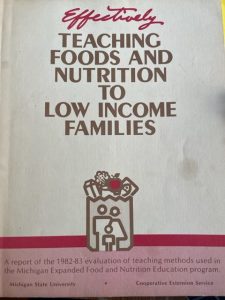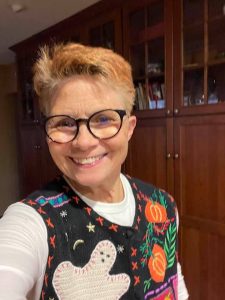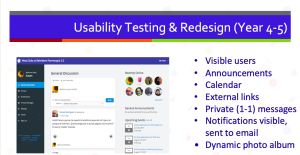About the Author (or, the payoff for paying attention)
Rather than post a CV [1] or biosketch, I share the journey that brought me to writing this book. It brings truth to Mary Oliver’s words:
“Pay attention. Be astonished. Tell about it!”
From post-college at 24 in 1979 through the early 1990s, I was a practitioner in service to families — first in the public health realm after completing a Masters in Nutrition (Penn State University), then much later in the field of parenting and family life. I had the honor of working with a wide range of families — most of them living in poverty and on public assistance — in a variety of government, non-profit, education, and industry environments, and seeing how internal and external systems played out to affect family well-being.

For the next 15 years or so, I capitalized on my doctoral training (PhD in Child and Family Studies, UW-Madison), and in my academic positions worked to create systems of change on behalf of families. Through Cooperative Extension in Wisconsin and then in Maryland, I developed community-based tools for assessing supports for school readiness, community-peer leader training in parenting, child care provider training systems, and policy tools for assessing child care policy and equity during the era of welfare reform. A move to Minnesota and the UMN in 2007 gifted me with immersion in Early Childhood Family Education (ECFE), and with oversight of the graduate program that prepared licensed parenting educators to work in school districts delivering ECFE programs. With ECFE, I created an evaluation tool that could assess parenting and child development outcomes, and could mobilize advocacy for statewide program support. While the goals of each effort were admirable, program success only occurred through coordinated, committed action across the policy-practice and research spectrum (meaning that I saw cracks in the system).
Along the way, I also found my passion as a teacher. With undergraduate instruction firmly a part of my academic role in 2002 — and continuing for the next 20 years — I honed my teaching skills and, more importantly, developed an understanding of contexts and methods that promote engagement and learning in an ever-diversified body of students.

Meanwhile, technology crept into my professional and personal world. When my dean at Maryland wanted courses to go online in 2005, I volunteered my own. It seemed a great way to make courses more accessible, as our community college peers had been doing for decades. This experience aligned well in my new role teaching teaching in the UMN Parent and Family Ed program (teachers license, Masters of Education) in 2007. Ours was the first online masters program for my college at a time when university policy hadn’t quite grasped the online world. It also facilitated our global outreach and a significant collaboration with the University of Iceland.
In 2007 I observed my own daughter, then 14, capably using multiple devices and apps to connect with her friends. Like a bolt ⚡️ of lightning my two worlds collided. It struck me that, in ten short years, her generation would be parents coming to parenting education with a whole new set of expectations for learning. I began researching parents’ technology use, and the ways ICT was used by educators who worked with parents. On the latter I discovered that while the big E world of Education was having fun with all this new technology, our own field of parenting education was not. I leaned heavily on groups like AERA and ISTE and on my learning tech colleagues at UMN to inform our family educator world. Seeing colleagues join this new area of study, including my early collaborator Jodi Dworkin and many of her PhD students, I re-constructed the Families and Technology Focus Group at the National Council on Family Relations  (NCFR) as a place to share resources and ideas and a new professional identity.
(NCFR) as a place to share resources and ideas and a new professional identity.
Loren Terveen, from Computer Science at the UMN, connected with me in 2012 on creating technology for ECFE, and with funding from the National Science Foundation and cooperation with the St Paul School District, Parentopia was born. ECFE families told us they didn’t need another content-based platform for information about parenting; they wanted a place to connect between meetings. The development, research, and implementation of Parentopia became my passion for the next ten years. Through it I discovered the power of collaborative technology for parents, and that innovation is less about creating it than helping people access it and know how to use it. This is true not just for parents, but for the professionals who work with them as well. When the United Nations invited me to write a background paper on digital technologies the family, and parenting education in 2021, I had LOTS to say.
Enter FSOS 3105 and this book. As a member of the faculty I asserted (OK, shouted) the need for our undergraduate students to be prepared for professional and personal life in a digital universe. Naturally that meant I be the one to create such a course and teach it. And so, in 2017, we launched Technology and the Family, FSOS 3105 to the first semester of plucky students. Five years and 10 semesters later, after teaching the course, and learning a ton from my students, I present the textbook. A dynamic, online, accessible, free text; one that reflects the many many principles and realities about family life, about teaching and learning, and about technology and global change that I’ve witnessed across my career and continue to explore through the most amazing connections.
Thank you for joining me! I hope you’re astonished!
- though I'm happy to share it if you'd like to see it ↵

